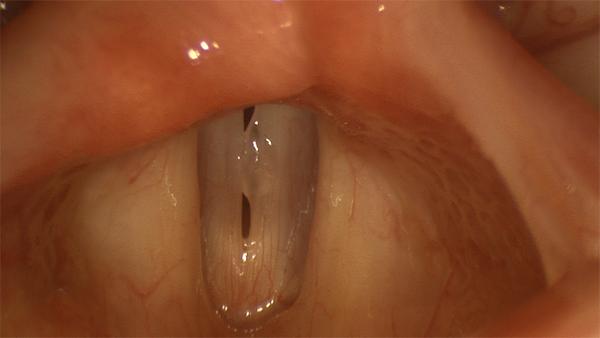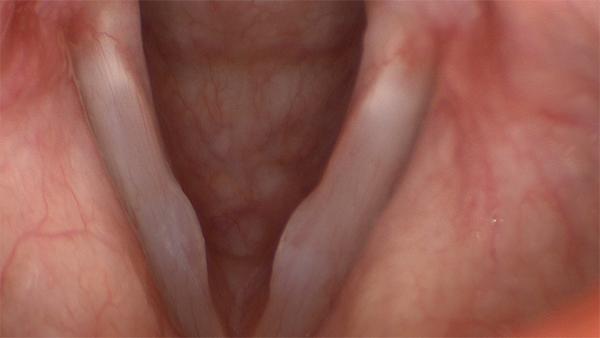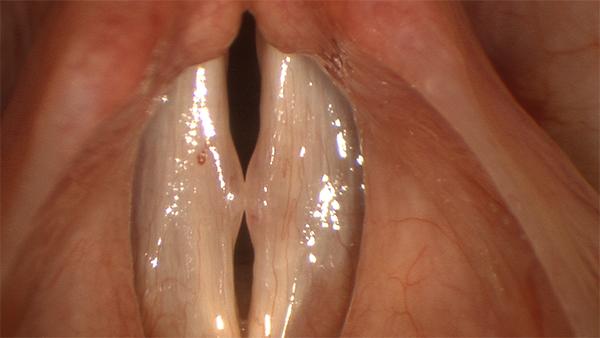What is a pseudocyst?
A pseudocyst is a specific and clearly demarcated mass (“mass” simply means lump, and does not imply cancer or precancerous lesion), almost always found at the midpoint the vocal cord. This typical location suggests that pseudocysts, like many other benign vocal fold lesions, are the result of phonotrauma: the physical stresses on the vocal fold which occur during heavy voice use, or voice use under adverse circumstances. It is not clear why a pseudocyst forms instead of another lesion related to phonotrauma like a polyp. The theory that pseudocysts are related to underlying vocal fold paresis has been proposed, but this link has not been clearly established.
The term ‘pseudocyst’ is not used by everyone. Some otolaryngologists call these lesions polyps. They are called pseudocysts here because they are clearly different from hemorrhagic polyps, both in clinical appearance and treatment.
What are the symptoms of a pseudocyst?
Pseudocysts cause painless hoarseness. In contrast to other masses, the hoarseness from pseudocysts is less pronounced, and may be intermittent. This is because the pseudocyst usually retains some pliability and vibrates along with the rest of the vocal fold during voice production, whereas a polyp or a cyst generally does not. A pseudocyst may cause a voice change only when it is swollen, so patients may report hoarseness only after heavy voice use, or during a cold or allergy season. Clinically, a large number of patients who have pseudocysts are vocalists, likely because the resulting hoarseness is typically mild enough to be evident only to someone who is very aware of small changes in voice quality.
What does a pseudocyst look like?
A pseudocyst looks like a transparent, sac-like lesion on the edge of the vocal fold. If inflamed or swollen, it may appear more opaque, with a reddish hue. It is sometimes associated with a vocal fold hemorrhage, in which case it may be red and indistinguishable from a polyp. In this case, a pseudocyst only becomes apparent when the blood resolves.

A patient with a pseudocyst of the left vocal fold - in appearance, it is similar to a blister.

Pseudocysts may occur on both vocal folds. During quiet breathing, they show up as smooth, rounded prominences on the edge of both vocal folds. Sometimes, the fact that these are distinct lesions on the vocal fold, is less evident during active breathing.
How is a pseudocyst treated?
Not all pseudocysts require surgery. Often, the practice of minimizing pseudocyst inflammation will ensure that the voice is largely unaffected. This is done through voice therapy to minimize phonotrauma, and control of medical factors like allergies and acid reflux, when present. A trial of medical and behavioral management is appropriate in almost every individual with pseudocysts.
When persistently bothersome, or when exacerbations remain frequent and difficult to control after voice therapy, pseudocysts may be successfully removed by means of microlaryngoscopic surgery. As always, the decision to undergo surgery should depend on the level of vocal disability – what may be crippling hoarseness to a professional vocalist may be of no consequence to someone else. Pseudocysts are superficial lesions with a generally low risk of scarring, and most vocalists are able to return to performance without difficulty afterwards.

This case involves pseudocysts on both vocal folds, and shows how they interfere with the dynamics of vocal fold closure during voicing.

